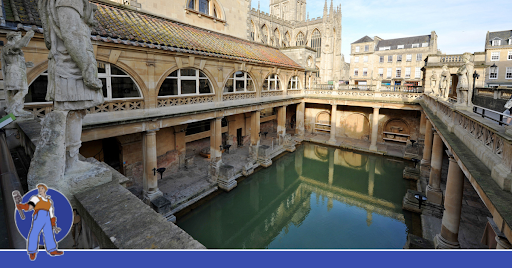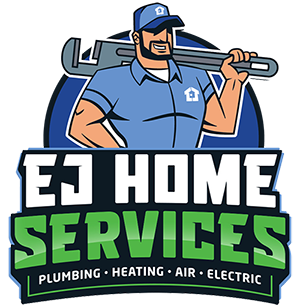How Plumbing Has Evolved


Plumbing is essential for any modern home or business, but it is something that we often take for granted. It is easy to forget that plumbing is a relatively new invention and has undergone significant evolution over the years.
One of the earliest examples of plumbing comes from the Minoan civilization on the island of Crete. This advanced society developed a complex system of pipes and aqueducts to transport water to their homes and public baths. This was an early example of using technology to bring clean water into homes, a practice that we still use today.
As civilizations grew and became more complex, so did their plumbing systems. The Ancient Romans are well-known for their impressive engineering feats, including the development of indoor plumbing. They used lead pipes to bring water into homes and businesses, a practice that continued for many centuries.
However, lead is a toxic metal and can cause serious health problems. This led to the development of new materials for plumbing, such as copper and steel. These metals are still used in plumbing today and have helped to make it safer and more reliable.
Plumbing has come a long way since the early days of civilization. Thanks to improvements in technology and materials, plumbing is now an essential part of our everyday lives. It is safe, efficient, and reliable, making it possible for us to enjoy clean water in our homes and businesses.
The Invention of the Toilet
The toilet is one of the most important inventions in human history. It is a simple yet essential piece of plumbing that allows us to safely and efficiently dispose of waste.
Toilets have been around for centuries, with the first recorded example dating back to the 15th century. However, it was not until the late 19th century that the modern flush toilet was invented. This revolutionary invention transformed sanitation and revolutionized the way we live.
Today, toilets are an essential part of any home or business. They are safe, efficient, and reliable, making them an indispensable part of our lives. Thanks to the toilet, we can enjoy clean bathrooms and homes without having to worry about waste disposal.
The Invention of Modern-Day Sewage Systems
Sewage systems are an essential part of any modern city or town. They are responsible for safely and efficiently transporting waste away from homes and businesses.
Sewage systems have been around for centuries, with the first recorded example dating back to the 4th century BC. However, it was not until the 19th century that modern sewage systems were developed. This was thanks to advances in engineering and sanitation.
Today, sewage systems are an essential part of any urban area. They are safe, efficient, and reliable, making them an indispensable part of our lives. Thanks to sewage systems, we can enjoy clean streets and homes without having to worry about waste disposal.
The Invention of Water Filtration Systems
Water filtration has come a long way from the early days of water filtration using sand and charcoal to modern-daysystems that use ultraviolet light and reverse osmosis. Early systems were not very effective at removing impurities from water, but modern systems are much more efficient.
One of the biggest changes in water filtration came with the invention of the first practical filter, which French chemist Charles Cagniard-Latour created in 1829. This filter was able to remove much smaller particles from water than previous filters, making it much more effective at purifying water.
Since then, there have been many other advances in water filtration technology. One of the most significant was the development of reverse osmosis in the 1970s, which is now widely used in water filtration systems. Reverse osmosis is a process that forces water through a semi-permeable membrane, which removes impurities from the water.
UV water filtration is another technology that has become increasingly popular in recent years. This type of filtration uses ultraviolet light to kill bacteria and other organisms in water, making it safe to drink.
Water filtration systems have come a long way since the early days of sand and charcoal filters. Modern systems are much more effective at purifying water, making it safe to drink.
The First Hotel with Plumbing
The first hotel with plumbing is believed to be the Golden Lion Hotel in Chester, England, which was built in 1570. The hotel had running water and flush toilets, which were a novelty at the time.
Plumbing began to spread to other parts of the world in the 1600s and 1700s, as Europeans began to settle in North America and other parts of the world. Plumbing became more common in homes and businesses in the 1800s as cities began to grow and people demanded better sanitation.
Today, plumbing is an essential part of every home and business. It is rare to find a building that does not have running water and flush toilets. Plumbing has come a long way since the early days of the Golden Lion Hotel, and it is now an essential part of our everyday lives.
The First Hotel in the United States with Plumbing
The first hotel in the United States that had plumbing was the Franklin House, which opened in Philadelphia in 1793. The system consisted of a gravity-fed main line that ran through the middle of the building, with branches running off to each room. Waste was collected in a central pit and then removed by hand.
While this may seem primitive by today’s standards, it was actually a big improvement over previous methods, which often involved chamber pots that had to be emptied manually. The introduction of plumbing made it possible for people to stay in hotels for extended periods of time without having to worry about sanitation issues.
The First Reservoir in the United States
The first reservoir in the United States was built in Boston in 1848. It was designed to store clean water for the city’s growing population. The reservoir held about 50 million gallons of water and was fed by a gravity-fed system of pipes.
The reservoir was a big improvement over the previous system, which relied on wells and pumps to provide water for the city. The new system allowed it to supply clean water to all parts of the city, which helped improve public health.
When the White House Adopted Modern Plumbing
The White House is one of the most important buildings in the United States of America. It has been home to many Presidents and their families over the years and is currently the residence of President Donald Trump. The White House is also a symbol of the American government, so it is important to keep it up-to-date with the latest technologies. This includes plumbing.
The White House has been modernized several times since it was first built in 1800. In 1833, an effort was made to update the building’s plumbing system so that it would be more efficient and less prone to leaks and other problems. This included installing new pipes made of lead, which were much less likely to corrode than the previous wooden pipes.
In 1848, another update was made to the White House’s plumbing. This time, a new system was installed that used cast iron pipes. These were even more durable than the lead pipes, and they lasted for many years.
Eventually, however, the cast iron pipes began to corrode as well. In 1901, a major renovation of the White House was undertaken, and part of this involved replacing the old cast iron pipes with new ones made of steel. The steel pipes were much more resistant to corrosion and lasted for many years.
In recent years, the White House has undergone several more renovations. In 2002, an effort was made to upgrade the plumbing system again so that it would be more efficient and less likely to leak. This included installing new, more durable pipes made of copper.
The White House is currently in the process of undergoing yet another major renovation. This time, the focus is on updating the electrical and plumbing systems so that they are even more energy-efficient and environmentally friendly. New, high-efficiency toilets and low-flow showerheads and faucets are being installed. These updates will help save water and energy and ultimately reduce the cost of running the White House.
Plumbing is essential for any modern home or business. It is safe, efficient, and reliable, making it an indispensable part of our lives. Thanks to advances in technology and materials, plumbing has come a long way since the early days of civilization. It is now an essential part of our everyday lives.

Worried about an electrical or plumbing problem?
When you need electrical or plumbing services in San Jose, Santa Clara, or any of the communities in the surrounding Bay Area, count on EJ Home Services. With more than a decade of industry experience, our expertly-trained technicians can handle just about any problem you may have. From drain cleaning to water leaks, sewer line replacements, toilet repairs, electrical repair, upgrades, and more, you can rely on us for all your needs. We even offer emergency services upon availability for serious issues that just can't wait. Our dependable team is always available to assist you.








